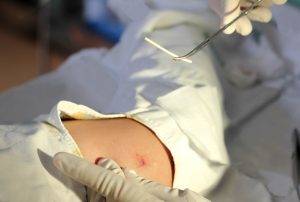Are you tired of dealing with the daily hassle of taking birth control pills or the inconvenience of scheduling monthly appointments for refills? When it comes to birth control, women have a range of options to choose from, each with its own benefits and drawbacks. For those seeking a hassle-free and long-lasting solution, Nexplanon may be the answer.
This small, implantable device offers up to three years of pregnancy prevention with minimal maintenance. In this article, we’ll explore the ins and outs of Nexplanon, including how it works, its effectiveness, and who may benefit most from this long-acting birth control option.
What Is Nexplanon?
Nexplanon is a long-acting, reversible contraceptive implant that is inserted into the upper arm of a woman. It is a small, flexible rod about the size of a matchstick and contains a synthetic form of the hormone progestin. The implant releases progestin into the bloodstream, which prevents ovulation and thickens cervical mucus to make it more difficult for sperm to reach an egg.
Nexplanon is one of the most effective forms of birth control implants, with a failure rate of less than 1%. It is a preferred choice for women who want a long-term, low-maintenance contraceptive method that does not require daily attention, like remembering to take a pill at the same time every day.
The implant is inserted under the skin of your upper arm by a healthcare provider, and it can remain in place for up to three years after you get the implant. After that time, it needs to be removed and can be replaced with a new implant if desired. The removal process is simple and can be done by a healthcare provider in just a few minutes.
Benefits Of Using Nexplanon Implant
There are many benefits to using Nexplanon as a form of birth control. Some of the key benefits include:
- Long-Acting Effectiveness: Nexplanon is one of the most effective forms of birth control, with a failure rate of less than 1%. It provides protection against pregnancy for up to three years, which means women do not have to worry about remembering to take a daily pill or getting a monthly injection.
- Convenience And Ease Of Use: Once the implant is inserted, there is nothing more to do until it needs to be removed or replaced. The presence of the implant does not interrupt a sexual activity to use a barrier method of contraception, like a condom, and it does not interfere with intimacy.
- Cost-Effectiveness: Nexplanon can be cost-effective in the long run because it eliminates the need to purchase monthly contraceptive pills or other forms of contraception. In addition, it can save money on healthcare costs associated with unintended pregnancies.
- Protection Against Unintended Pregnancies: Nexplanon provides protection from that very moment of insertion, so women who use it are less likely to experience an unintended pregnancy. This can provide peace of mind and reduce anxiety about the possibility of becoming pregnant.
- Health Benefits: Nexplanon offers women not only effective contraception but also potential health benefits such as a reduced risk of certain types of cancer like ovarian and endometrial cancer. Additionally, it can aid in regulating menstrual cycles and alleviating symptoms of premenstrual syndrome (PMS).
How To Use The Implant
Nexplanon works by releasing a synthetic hormone called etonogestrel into the bloodstream. Etonogestrel is a type of progestin, which is similar to the hormone progesterone that is naturally produced in the body. The synthetic hormone in Nexplanon prevents pregnancy in several ways:
- Inhibiting Ovulation: Etonogestrel implant works by inhibiting the release of an egg from the ovaries, which is necessary for fertilization and pregnancy.
- Thinning The Uterine Lining: Etonogestrel also thins the lining of the uterus, making it less receptive to a fertilized egg and less likely to support implantation.
- Thickening Cervical Mucus: Etonogestrel thickens the cervical mucus, making it difficult for sperm to pass through the cervix and reach the egg.
Nexplanon implant can range for three years, after which it must be removed and replaced if continued contraception is desired. Once the implant is removed, fertility typically returns quickly. While Nexplanon is effective for preventing pregnancy, it does not protect against sexually transmitted infections (STIs), so it is important to use barrier methods of contraception, such as condoms, to reduce the risk of STIs.
Advantages Of Nexplanon As A Contraceptive
Nexplanon offers several advantages as a contraceptive method, including:
- Effectiveness: Nexplanon provides protection against pregnancy for up to three years, making it a convenient option for women who do not want to worry about taking a daily pill or getting a monthly injection.
- Convenience: Once the implant is inserted, the implant just sits in your upper arm there is nothing more to do until the time the implant needs to be removed or replaced. There is no need to interrupt a sexual activity to use a barrier method of contraception, like a condom, which does not interfere with intimacy.
- Reversible: For women who may desire to conceive in the near future, Nexplanon is an excellent option as it is a reversible contraceptive method. This means that shortly after the removal of the implant, fertility is expected to return, allowing for the possibility of pregnancy.
- Cost-Effective: Nexplanon can be cost-effective in the long run because it eliminates the need to purchase monthly contraceptive pills or other forms of contraception. In addition, it can save money on healthcare costs associated with unintended pregnancies.
- Health Benefits: Women can benefit from Nexplanon beyond its contraceptive effects, as it has the potential to decrease the risk of specific cancers like ovarian and endometrial cancer. Moreover, it can assist in regulating menstrual cycles and easing symptoms of premenstrual syndrome (PMS).
- Private: Unlike certain contraceptive options like condoms or diaphragms, Nexplanon provides complete privacy as it cannot be felt or seen by sexual partners.
- Safe: The FDA has approved Nexplanon for use in the United States, confirming that it is a secure and efficient method of contraception, provided that it is used correctly.
Common Side Effects Nexplanon Implant
Possible side effects of Nexplanon, like any other form of birth control, can vary from person to person. However, some common side effects experienced by a significant percentage of women who use Nexplanon include
- Irregular Menstrual Bleeding: About 1 in 3 women using Nexplanon experience irregular menstrual bleeding. This can range from light spotting to heavy bleeding or no bleeding at all. Irregular bleeding may subside after a few months, but it can persist for as long as you use the implant.
- Headaches: Headaches are another common side effect of Nexplanon. They can range from mild to severe and last several hours or days.
- Weight Gain: Some women may experience weight gain after using Nexplanon. This is usually a small amount of weight, and it’s unclear whether the implant is responsible for the weight gain.
- Mood Changes: Hormonal changes can affect your mood, and Nexplanon is no exception. Some women may experience mood swings, depression, or anxiety after using the implant.
- Acne: Hormonal changes can also cause acne, and some women may experience breakouts after using Nexplanon.
- Breast Tenderness: Some women may experience breast tenderness or soreness after using Nexplanon. This usually goes away after a few weeks or months.
- Nausea: Nausea is another common side effect of Nexplanon, particularly in the first few weeks after insertion. This should subside after a few weeks.
A Comparison To Other Birth Control Implants
Selecting the most suitable birth control method can hinge on several factors, including health status, lifestyle, and personal inclinations, among others, considering the abundance of contraception options. You might need to use a backup method while using Nexaplanon. Here’s a comparison between Nexplanon and other commonly used birth control methods:
- Oral Contraceptives: Oral contraceptives, or “the pill,” are a common birth control method that is taken daily. They contain hormones that prevent ovulation and thicken cervical mucus to prevent sperm from reaching the egg. While both Nexplanon and the pill are hormonal birth control methods, Nexplanon is a long-acting option that doesn’t require daily use.
- Intrauterine Devices (IUDs): Intrauterine devices (IUDs) are small T-shaped devices that are placed in the uterus to prevent pregnancy. They offer long-lasting contraception, lasting several years, and are available in hormonal and non-hormonal forms. Similar to Nexplanon, IUDs do not need to be used daily and provide highly effective birth control.
- Condoms: Condoms are a barrier method of birth control that is worn during sexual activity to prevent pregnancy. Additionally, they offer protection against sexually transmitted infections (STIs). Unlike Nexplanon and IUDs, condoms must be used every time you have sex.
- Diaphragms: A contraceptive option called diaphragms involves inserting a device into the vagina to cover the cervix and obstruct sperm from reaching the egg. A healthcare provider must properly fit the diaphragm, and it must be used during every sexual encounter.
- Sterilization: Sterilization is a method of birth control that is permanent and involves surgical procedures aimed at preventing pregnancy. Women can have a tubal ligation, which involves blocking or cutting the fallopian tubes, while men can have a vasectomy, which involves blocking or cutting the vas deferens. Sterilization is a highly effective form of birth control, but it is permanent and cannot be easily reversed.
Risks Associated With Nexplanon Contraceptive Implant
Like any form of medication, Nexplanon carries potential risks and bad side effects. While the risks associated with Nexplanon are relatively low, it’s important to be aware of them before deciding if this form of birth control is right for you.
Some of the potential risks associated with Nexplanon include:
- Blood Clots: The use of hormonal contraceptives like Nexplanon can increase the risk of blood clots. This risk is highest for women who smoke, are overweight, or have a history of blood clots.
- Ectopic Pregnancy: While Nexplanon is highly effective at preventing pregnancy, there is still a small risk that pregnancy will be ectopic (when a fertilized egg implants outside the uterus).
- Infection At The Insertion Site: In rare cases, the site of insertion can become infected.
- Changes In Mood: Some women may experience changes in mood or depression while using Nexplanon.
- Irregular Bleeding: While Nexplanon can reduce menstrual bleeding and cramps for many women, some may experience irregular bleeding or spotting.
FAQS About Nexplanon Birth Control Insertion
Here are some common questions and answers about Nexplanon:
- Who Can Use Nexplanon?
Nexplanon is a birth control option for women who are looking for a long-acting, reversible contraceptive method. It can be used by women of all ages, including those who have not given birth. However, women with a history of blood clots, a history of depressed mood, or certain medical conditions should not use Nexplanon. Your healthcare provider can help determine if Nexplanon is a good option for you.
- How Long Does Nexplanon Last?
Nexplanon is a long-acting birth control method that can last for up to three years. The small, flexible Nexplanon plastic rod is inserted under the skin of the upper arm, and it continuously releases a low dose of the hormone progestin to prevent pregnancy.
After three years, the level of progestin released by the implant may decrease, making it less effective at preventing pregnancy. Therefore, it’s important to have the implant removed and replaced with a new one if you decide to continue to use the implant method.
It’s worth noting that some women may experience a decrease in the effectiveness of Nexplanon before the three-year mark. This may occur if the implant is not inserted correctly if it moves out of place, or if the woman is taking medications that interfere with its effectiveness.
If you suspect that your Nexplanon implant may have moved out of place or if you are experiencing side effects that may indicate a problem, it’s important to tell your doctor as soon as possible.
- Can Nexplanon Be Removed Early?
Yes, Nexplanon can be removed at any time before the three-year mark if you wish to discontinue using it as your birth control method. Your healthcare provider can remove the implant in a quick outpatient procedure.
The procedure to remove Nexplanon is usually simple and quick, taking only a few minutes. Your healthcare provider will numb the area around the implant and then make a small incision to remove the implant. Once the implant is removed, you will no longer be protected against pregnancy.
It’s important to note that fertility can return quickly after Nexplanon is removed, so it’s recommended to use another form of contraception if you do not wish to become pregnant. In some cases, women may become pregnant shortly after the implant is removed, so it’s important to discuss your options with your healthcare provider.
If you decide to have the implant removed early, it’s important to let your healthcare provider know in advance so that they can schedule the removal procedure. In some cases, women may experience side effects or other issues that prompt them to have the implant removed earlier than planned. If you experience any unusual symptoms or side effects while using Nexplanon, be sure to discuss them with your healthcare provider.
- Who Should Not Use Nexaplanon?
While Nexplanon is a highly effective and convenient form of birth control, it is unsuitable for everyone. Women who have certain medical conditions or risk factors may not be good candidates for Nexplanon. Here are some examples of who should not use Nexplanon:
If you are pregnant or think you may be pregnant. Nexplanon is not effective at preventing pregnancy if you are already pregnant, and it is important to remove the implant if you become pregnant while using it.
Women who have or have had blood clots or clotting disorders. Nexplanon can increase the risk of blood clots, and women with a history of blood clots or clotting disorders should not use Nexplanon.
Women who have liver disease or liver tumors. Nexplanon is metabolized in the liver, and women with liver disease or liver tumors may not be able to metabolize the hormones in Nexplanon properly.
Women who have breast cancer or a history of breast cancer. The hormones in Nexplanon may promote the growth of breast cancer cells, so women with breast cancer or a history of breast cancer should not use Nexplanon.
Women who have unexplained vaginal bleeding. Nexplanon can cause irregular bleeding or spotting, but if you have unexplained vaginal bleeding, it is important to determine the cause before using Nexplanon.
Women who are allergic to any of the components of Nexplanon. Nexplanon contains a synthetic form of the hormone progesterone, and women who are allergic to progesterone or any other component of Nexplanon should not use it.
It is important to discuss your medical history and any potential risk factors with your healthcare provider before deciding to use Nexplanon or any other form of birth control. Your healthcare provider can help you determine if Nexplanon is a good choice for you based on your individual health and lifestyle factors.
The implant insertion is typically done under local anesthesia, which means the doctor will numb your arm before the procedure. Therefore, most people do not feel pain during the insertion process.
After the procedure, some individuals may experience mild to moderate pain, swelling, or bruising at the insertion site, which typically resolves within a few days to a week. Over-the-counter pain relievers, such as ibuprofen, can be taken to manage any discomfort.
Removing Nexplanon also requires a healthcare provider to make a tiny cut at the insertion site and gently pull the device out. Again, this procedure is done under local anesthesia to minimize pain. Some people may feel slight pressure or discomfort during the removal, but the procedure is generally quick and straightforward.
If a person experiences significant pain during the insertion or removal process or has concerns about the procedure, they should speak with their healthcare provider. They may be able to provide additional numbing medication or other options to make the procedure more comfortable.
- Does It Affect Fertility?
One of the benefits of Nexplanon is that it does not affect fertility after removal. Once the device is removed, a person’s ability to become pregnant should return to their pre-Nexplanon level. However, it is important to note that fertility can vary from person to person and can also be influenced by other factors such as age, overall health, and underlying medical conditions.
It is also important to note that while Nexplanon does not affect fertility after removal, it can take some time for a person’s menstrual cycle to return to normal. Some people may experience irregular periods or prolonged periods after removal, which can affect their ability to conceive.
If a person is considering becoming pregnant after Nexplanon insertion and removal, they should speak with their healthcare provider to discuss their fertility and any potential concerns. They may also want to consider other factors affecting fertility, such as age, underlying medical conditions, and lifestyle factors.
- Can It Be Used While Breastfeeding?
Yes, Nexplanon can be used while breastfeeding, as it does not contain estrogen, which can interfere with milk production. The progestin hormone in Nexplanon is considered safe to use while breastfeeding, and it will not harm the baby.
The American College of Obstetricians and Gynecologists (ACOG) recommends that progestin-only contraceptives like Nexplanon are the preferred method of birth control for breastfeeding individuals. This is because they do not interfere with milk production and are effective at preventing pregnancy.
It is important to note that while Nexplanon is safe to use while breastfeeding, it may affect the quality or quantity of breast milk in some individuals. This is a rare occurrence, and most people will not experience any issues with milk production while using Nexplanon.
If a person is breastfeeding and considering using Nexplanon, they should speak with their healthcare provider to discuss their options and any potential risks or concerns. Their care provider may also want to monitor their milk supply and the baby’s growth to ensure no issues.
As a long-acting and highly effective birth control option, Nexplanon offers women the freedom to focus on their lives without worrying pulmonary embolisms and about unwanted pregnancies. With its non-hormonal alternatives, improvement of menstrual symptoms, and cost-effectiveness, it’s no wonder why more and more women are choosing Nexplanon. So if you’re looking for a hassle-free and reliable birth control (without serious side effects) option, talk to Dr. Susan Fox Health Center For Women about Nexplanon today.









